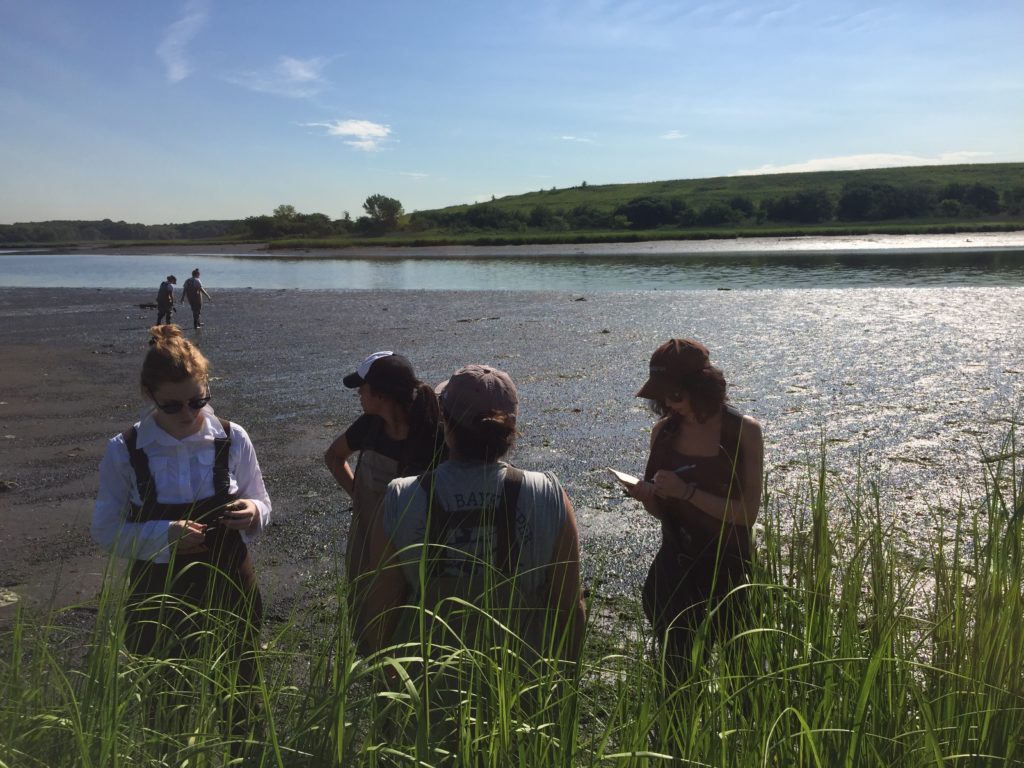Reintroducing Natural Systems to Create Healthier, More Resilient Cities

NY/NJ Baykeeper staff and Freshkills Park interns conduct biodiversity monitoring.
Storm surges reached near record highs in Boston during an intense winter storm early this year. Storms are being seen with increasing strength and frequency throughout the country, and they’re being coupled with increasing costs of repairs and restorations. This has given rise to creative mitigation strategies to limit the impact of severe weather events. The most recent strategy is NY/NJ Baykeeper’s plan to build an urban living shoreline and oyster habitat at Earle Naval Weapons Station in New Jersey.
After suffering over $50 million worth of damage in Superstorm Sandy, the navy turned to nature for a possible solution. Now nearly a mile of oyster reefs off of its shores will act as a natural buffer to storm wave damage. Oyster reefs help to alleviate the effects for storm waves by slowing them and absorbing their energy as they pass over the reefs. This ultimately decreases the force and height of the waves when it meets the shoreline. Oysters also filter and clean the waters where they are found.
Freshkills Park partnered with Baykeeper in 2015 to investigate the possibility of a “living shoreline” and conduct biodiversity monitoring. Constructing a living shoreline would consist of adding salt marsh plants, algae, ribbed mussels and other bivalves at Freshkills Park for both storm resiliency and water filtration benefits. The waterways of Freshkills Park release their waters into the Hudson-Raritan Estuary, and during storms this area is susceptible to surges. These surges can bring an inflow of pollutants with them. A living shoreline would act as a buffer, absorbing these pollutants, before reaching the shore.
These are also the guiding principles behind the Billion Oyster Project, implemented by the New York Harbor School. The project is using oysters to clean the waters around New York City and provide storm resiliency. Each year, a senior from the New York Harbor School works as an intern at Freshkills Park to help develop aquaculture possibilities for the park’s waterways. New York Harbor School interns have helped to design a new living dock at Freshkills Park. The re-purposed floating jet-ski dock will house wetland plants as well as ribbed mussel aquaculture. This will float in the middle of Freshkills Park’s creeks to provide habitat for fish and birds while helping to clean the waterways.
Through reintroducing natural systems into urban environments, such as living shorelines and oyster reefs, we can create more resilient cities that are prepared for increasingly volatile weather patterns. When coupled with projects like the living dock that create novel ways of harnessing the benefits of natural systems to clean the waters, cities have the potential to become healthier, too.




